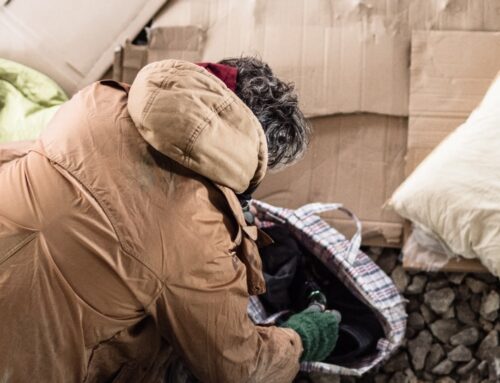The tent city in Martin Place arose out of a perfect storm of events. Events which not only result in an inevitable rise in homelessness, but also tend to make us all feel more fearful of the future.
People are noticing a widening gap between the rich and the poor. They are wondering why a relative few receive increasingly huge salaries while their own pay packets remain stagnant in the face of rising costs of living. Rising house prices and rents leave many fearful that they are only one pay packet away from catastrophe.
A significant proportion of homelessness can be attributed to the housing crisis. With mortgage rates at record lows and many families being in debt, my guess is just a small increase in interest rates will add many more people to the list of homeless.
Seeing pictures of the tents in Martin Place must leave many people with a nagging feeling in the back of their minds: “This could be me”.
The face of homelessness is already changing. Up to 40% of all homeless people now are women, many with children, escaping domestic violence.
One bright spot amid this societal gloom is the public concern expressed over the plight of those genuine homeless in Martin Place. It shows that compassion for the underdog is alive and well, even amongst those whose economic circumstances are not a source of concern.
I know many wealthy people are very worried about the way they see society heading. They understand all the authorities can do is move homeless people on from one place to another. Like Moses looking for the promised land they shift from suburb to suburb and then back again. If it wasn’t so serious it would be farcical.
Nobody can deny the numbers of homeless people are increasing and there is an appalling lack of services available to them. Sadly, the reason seems to be that there is no money to be made out of affordable accommodation and effective provision of services to the most needy. Governments are reluctant to spend money where they should.
Homeless people face enormous personal issues. Many suffer physical disabilities, mental illness or are victims of violence. They need special help.
Government knows that providing a wrap-around suite of care services is the key to breaking the cycle of homelessness. When homeless people are given government housing together with support services like counselling and healthcare, 90% remain off the streets.
However, what governments tend to do is reluctantly drip feed funding to already under-resourced services. This inevitably leaves the homeless out in the cold where they get sick and begin a never-ending cycle of hospital admissions.
The average homeless person I see at my Exodus Foundation suffers up to four chronic illnesses many of which need special treatment. Sadly, the homeless often leave hospital without proper accommodation or treatment plans.
Homelessness is entirely a state government issue. They hold the purse strings to the health, social and housing solutions that are so desperately needed. So ultimately they are responsible for what has occurred at Martin Place. The homeless people there are indicative of a wider governmental malaise which leaves all of us feeling vulnerable and many wondering if in the future we could end up homeless too.
The homeless may well make NSW Premier, Gladys Berejiklian, feel uncomfortable, but I suggest she ought to feel ashamed of her governments inaction.




